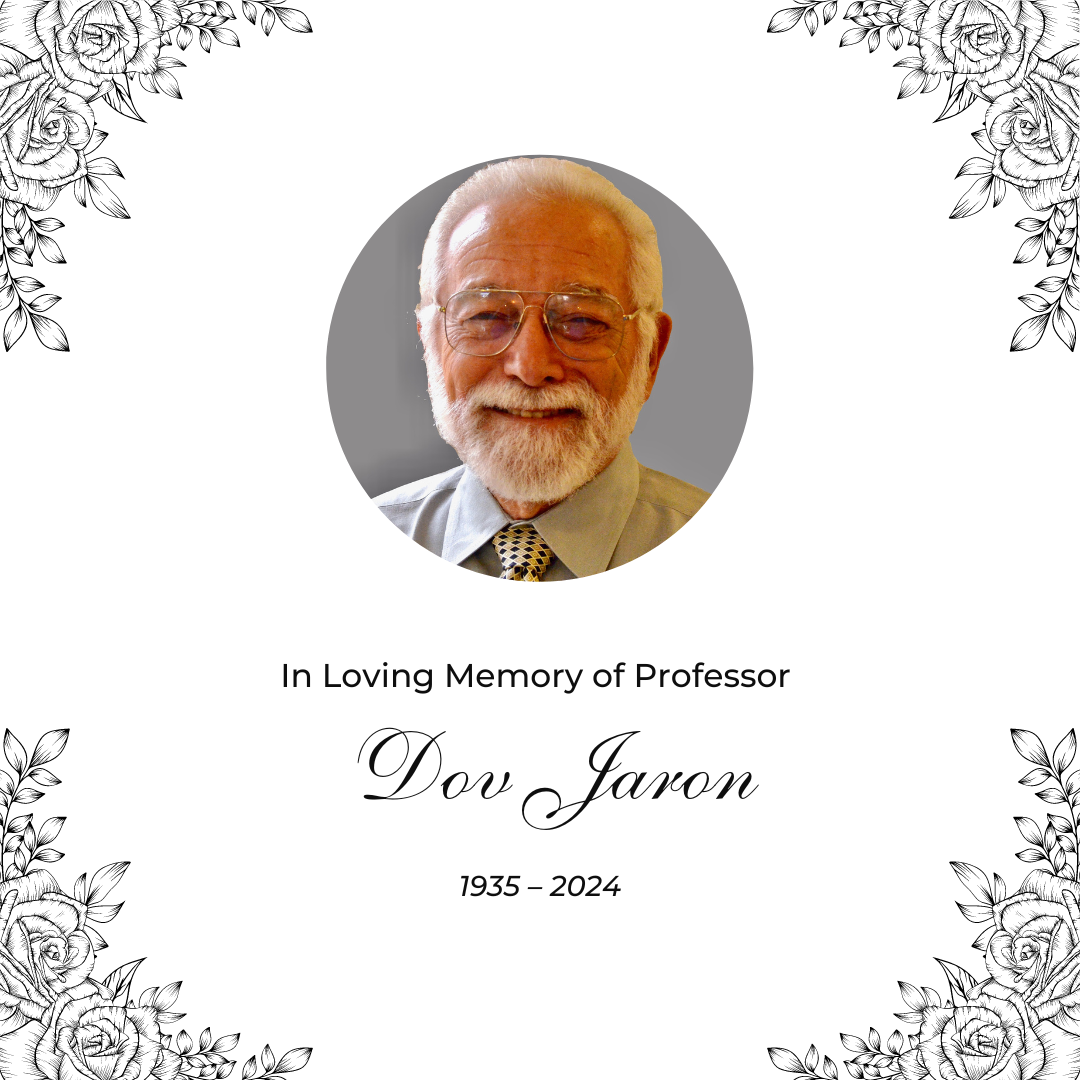
In Loving Memory of Dr. Dov Jaron, Calhoun Distinguished Professor, an early innovator in Biomedical Engineering, whose profound contributions to the field have had a substantial impact well beyond his research.
Dov Jaron, PhD, joined Drexel University in 1980 as the founding Director of the Biomedical Engineering and Science Institute at Drexel University. He served in that position from 1980 to 1996, when he was tapped by the NIH leadership to serve as the NIH Associate Director for the National Center for Research Resources and Director of Biomedical Technology Program. Dr. Jaron was instrumental in creating the first freestanding, multidisciplinary, research-based graduate programs in Biomedical Engineering and Biomedical Science in the country. His efforts and leadership are the foundation for what is now known as the School of Biomedical Engineering, Science and Health Systems (‘BIOMED’). From 1991 to 1993, Dr. Jaron was on a two-year assignment at the National Science Foundation (NSF), where he was Director of the Division of Biological and Critical Systems in the Engineering Directorate. As noted earlier, from 1996 to 1998, he was Associate Director for the National Center for Research Resources and Director of its Biomedical Technology program at the National Institutes of Health (NIH). He subsequently returned to Drexel as the Ernest N. Calhoun Distinguished Professor of Engineering and Medicine.
Dr. Jaron's major research contributions have been in development of models to study cardiovascular dynamics and the interaction of mechanical cardiac assist devices with the cardiovascular system. He pioneered the application of engineering techniques to the study of the control of cardiac assist devices. More specifically, in collaboration with heart surgeon Adrian Kantrowitz (1918-2008), Dr. Jaron led the engineering team that developed the first successful in-series cardiac assist device, the intra-aortic balloon pump (IABP). This device is now used globally to support patients’ failing circulation. His research to develop models of cardiovascular dynamics was critical to understanding the interaction of cardiac assist devices with the circulation and optimizing their effectiveness. By integrating engineering techniques, mathematical approaches, and physiological information, Dr. Jaron’s research led to an improved understanding of the control system characteristics of cardiac assist devices and to the development of improved techniques that maximize the effectiveness of cardiac mechanical support systems. He also worked extensively on modeling of gas transport in the microcirculation and on modeling, development, and assessment of protection techniques for pilots subjected to high acceleration stress. His illustrious research resulted in more than 140 articles in archival journals, conference proceedings and book chapters, and more than 60 abstracts.
In addition to his research activities, Dr. Jaron has made influential and eminent contributions to the development of the bioengineering profession worldwide, through his extensive professional activities and service with the government. As Director of the Biological and Critical Systems Division at NSF, he led in the creation of the new Division of Bioengineering and Environmental Systems and significantly increased funding for bioengineering research. At NIH, he was a major driving force within the NIH Bioengineering Consortium (BECON). His many efforts at the agency culminated in the trans-NIH symposium titled, "Bioengineering: Building the Future of Biology and Medicine," which he co-chaired. The symposium, for which he received the NIH Director's Award, was hailed by the engineering research community and by the NIH as a watershed for the agency and for the field of Bioengineering. This and his other accomplishments at NIH helped affirm the importance and the critical role of engineering to the solution of basic and applied research problems in biomedicine.
In 1986 and 1987, Dr. Jaron served as President of the Engineering in Medicine and Biology Society (EMBS). He was a founding member of the board of The American Institute of Medical and Biological Engineering (AIMBE) and as a member of the Administration Council of The International Federation for Medical and Biological Engineering (IFMBE). In 1997, he became president-elect of IFMBE. He assumed the presidency of the organization in July 2000 and served in this capacity until 2003. From 2003 to 2006, he served as Vice President of the International Union for Physical and Engineering Sciences in Medicine. In 2008, he was elected to the Executive Board of the International Council for Science (ICSU). Dr. Jaron was also a Fellow of the IEEE, the American Association for the Advancement of Science (AAAS), the Academy of Surgical Research, and the AIMBE. He was a permanent member of the World Academy for Biomedical Technology.
Dr. Jaron was also an active and contributing member of many national and international professional societies, including the IEEE, the Engineering in Medicine and Biology Society of the IEEE, the ASEE, Tau Beta Pi, Eta Kappa Nu, Sigma Xi, the New York Academy of Sciences, the Biomedical Engineering Society, the American Society for Artificial Internal Organs, the International Society for Artificial Organs, the AAAS, the Aerospace Medical Association, and the Cardiovascular Dynamics Society.
In addition to being an internationally respected and recognized scholar, teacher, and mentor, as well as a founding member and the Patriarch of the BIOMED family, Dr. Jaron was a kind and generous friend, a husband, a father, and proud grandfather, all to whom we extend our sincere and heartfelt condolences. His contributions to the field of Biomedical Engineering, to Drexel University in general, and to the School of Biomedical Engineering, Science and Health Systems in particular, are too numerous to count. The BIOMED family owes a great deal of gratitude to him and his leadership. We hope that his spirit will be with us all for a very, very long time and that his visionary work continues to inspire future generations.